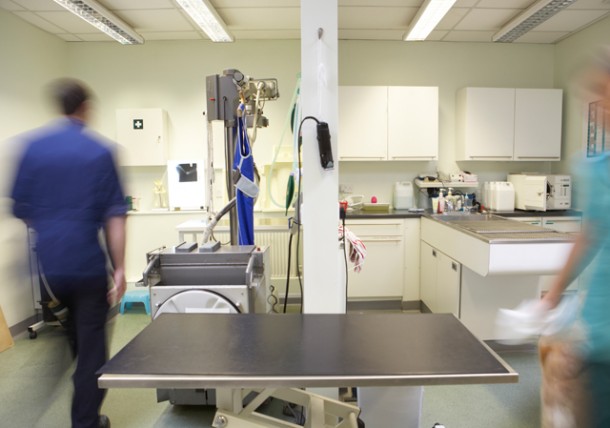Surgical Anesthesia for Your Pet

It can be difficult to make the decision to have your pets undergo surgery and the necessary anesthesiaInsensitivity to pain, especially as artificially induced by the administration of gases or the injection of drugs before surgical operations. that accompanies the procedure. This article will address surgical anesthesia and how it relates to your pets in order to address some common fears and questions.
Before Your Pet’s Surgical Procedure
The anesthesia process actually begins the night prior to the surgical procedure. Your veterinarian will ask you to stop food and/or water after a certain time the day before the anesthesia is scheduled. This fasting is important as a full stomach can make it difficult for any animal to breathe under anesthesia due to the pressure food and gases place on the diaphragmA dome-shaped, muscular partition separating the thorax from the abdomen in mammals.. Also, some anesthetic medications given to pets can sometimes cause vomiting. This can cause both an unpleasant experience for pets and lead to anesthetic complications such as pneumoniaLung inflammation caused by bacterial or viral infection, in which the air sacs fill with pus and may become solid.. Depending on your veterinarian’s assessment of your pet, he or she may choose to perform pre-anesthetic blood testing.
On the morning of the surgical procedure, several steps are followed in order to prepare for anesthesia. Your pet is examined and weighed in order to obtain an accurate body weight for calculating the correct anesthesia drug dosages. Your veterinarian may then give them a mixture of two or three medications just under the skin, called a pre-anestheticIs a drug that is given before the administration of an anesthetic. drug mixture. The pre-anesthetic drug mixture helps to calm them before the procedure. Veterinarians rely on a mixture of small doses of multiple medications instead of one single anesthetic, a method called multi-modal anesthesia. This method ensures a better and safer anesthetic event due to the synergisticAugmenting the activity of another organ, agent, or substance. effect of these drugs and the reduced risk of an overdose of any one particular drug.
In the 10-minute to one-hour period during which the pre-anesthetic mixture takes effect in your pet and allows them to relax, the veterinary technical staff may place an intravenous catheter and draw the necessary blood to run laboratory tests pertinent to the surgical procedure. Laboratory tests may also be checked prior to the day of surgery.
Anesthetics at Work During the Surgical Procedure
Once the veterinarian has interpreted the laboratory results and determined your pet’s anesthetic risk, he or she will give them an induction agentMedications given at the beginning of an anesthetic to induce loss of consciousness. to your pet. An induction agent is a drug that is used to allow your pet to become completely anesthetized so that your veterinarian can place an endotrachealSituated or occurring within or performed by way of the trachea. tube in your pet’s trachea (windpipe) for oxygen delivery and breathing control while under anesthesia. The induction agent is usually very fast-acting. Once the endotracheal tube has been secured in place, oxygen and a maintenance anesthetic drug or anesthetic gas will be delivered through the endotracheal tube. Maintenance anesthetic drugs or gases are numerous; however, the most common gas used in veterinary medicine is isoflourane. The veterinary staff will monitor your pet’s vitals during the entire procedure. Some of these vitals include heart rate, blood pressure, respiratoryRelating to the action of breathing. rate and oxygenation. By continuously monitoring them throughout the entire procedure, the technical staff and veterinarian can make adjustments to your pet’s anesthesia to ensure the safety of the anesthetic event.
After the Surgery
At the completion of the surgery, the veterinarian will have the technical staff stop the flow of the anesthetic gas. Oxygen will be continued until your pet’s endotracheal tube is removed. Once they are awake enough to swallow on their own, the endotracheal tube will be removed. The time it takes for a pet to become fully awake from anesthesia varies in each animal. During this recovery time, the technical staff will create a warm, soft environment around your pet so that the recovery process is as smooth as possible.
Jeff Chalkley, DVM, lives in Houston, Texas. Dr. Chalkley practices veterinary medicine at Westbury Animal Hospital.

